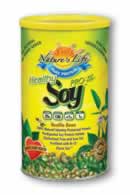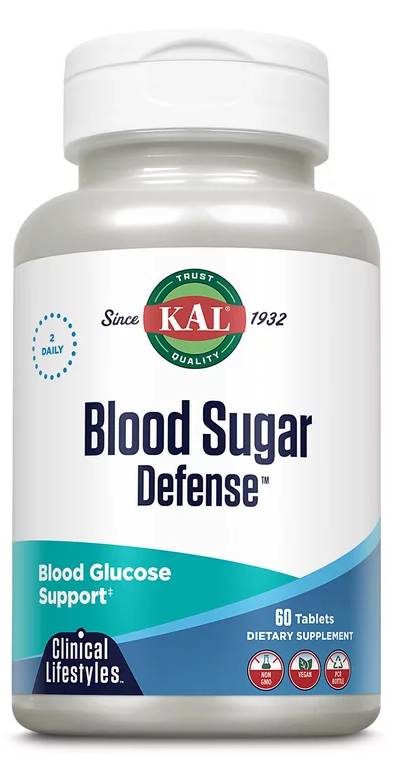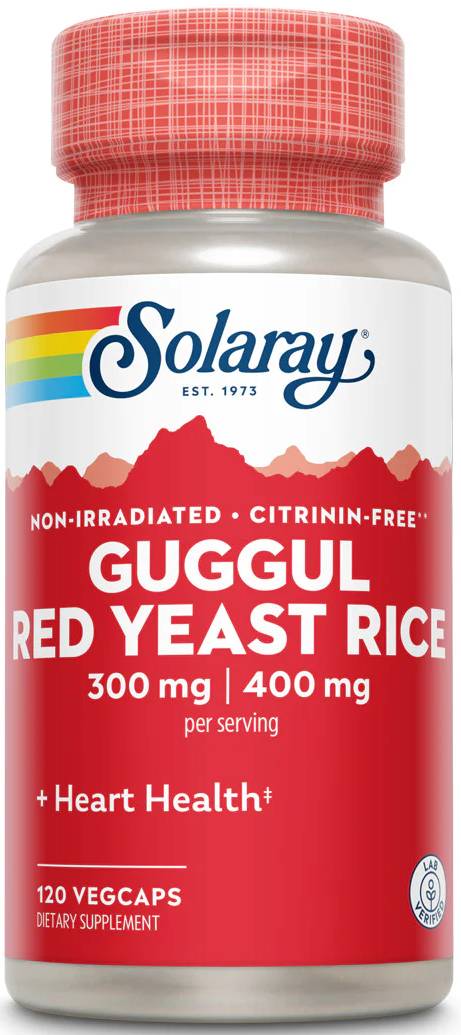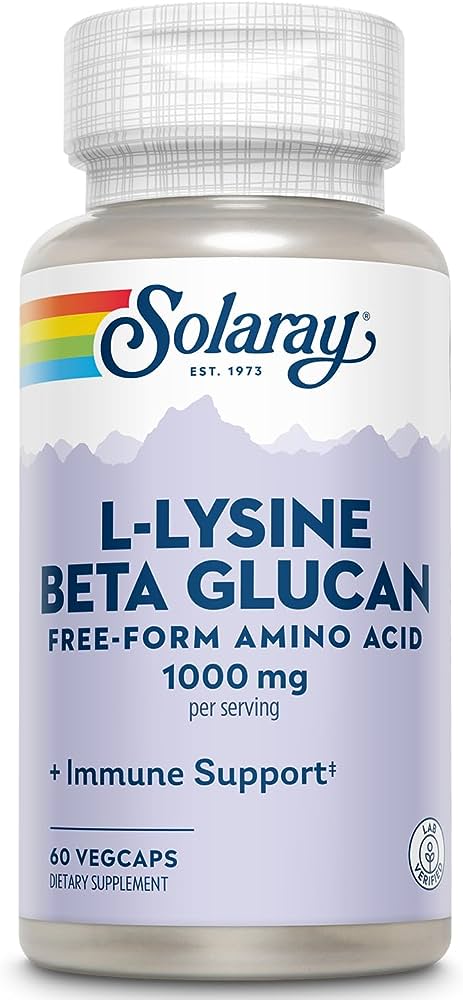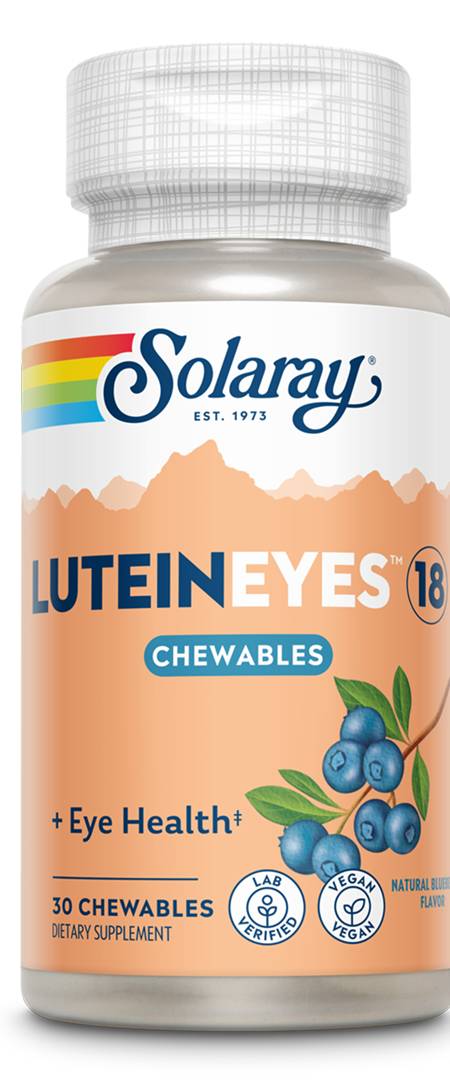- UPC: 4064700304
- # 15304
| ||||||||||||||
|
SOY - The Super Food Scientists have discovered the growing number of ways in which soy supports good health. Soy is finally beginning to receive the respect it has always deserved as one of Mother Nature’s "miracle foods." Soy Protein Stands Out The soy bean is packed with good nutrition. For starters, soy is a great source of protein. While other macro nutrients are also important, protein provides the foundation for good health. Our body’s muscles, blood, enzymes, hormones, skin and skeleton all depend on protein. Soy proteins from Nature’s Life® meet or exceed the amino acid requirements for children and adults.1 The body can use soy proteins as effectively as egg, meat or dairy protein.2 The protein isolate form of soy has a Protein Digestibility Corrected Amino Acid Score (PDCAAS) as high as egg or milk protein; 1.0, the highest score possible in this U.S. government protein quality rating system. PDCAAS is based on the amino acid requirements for humans, and is the foundation for the determination of the Daily Reference Value of protein (50 grams). Since soy doesn’t contain unwanted saturated fat and cholesterol (as animal protein does),3 it is a sensible choice for health-conscious people. Soy protein is also good news for dieters. The high quality soy protein isolate found in many of Nature’s Life protein products contains only one gram of fat per serving and is free of cholesterol and lactose. Phytonutrients Complete the Picture Protein is just the tip of the iceberg, when it comes to the benefits of soy. Soy also contains phytonutrients (plant source nutrients), such as isoflavones, phytosterols, saponins, lignans and others. These phytonutrients play many important roles in supporting good health.4 At Nature’s Life we take special care to process our soy proteins with water, never alcohol, to retain all these important nutrients.5 The isoflavones (genistein, daidzein and glycitein) are unique because they are only found in soy. The isoflavones in soy, especially genistein and daidzein, have antioxidant properties.4 That is, they deactivate free radicals and support the antioxidant defense system by increasing levels of other antioxidant enzymes.4 Isoflavones are classified as phytoestrogens, which means that they are natural plant estrogens. Plant estrogens compete with estrogens produced in the body or introduced from the environment and help prevent them from binding to estrogen receptor cells.6 Similar to a broken key in a lock, soy’s phytoestrogens do not open the lock, but neither do they allow another estrogen "key" to operate the lock. Much like musical chairs, there is a limited number of receptor cells: estrogens that don’t bind to these cells eventually dissipate. The benefit is that soy estrogens reduce the body’s vulnerability to the influence of potentially damaging estrogens. The weak phytoestrogens in soy prove to be a viable substitute for the stronger natural estrogens in their ability to influence sex hormones, protein synthesis and cell proliferation and differentiation.7,8 Another health benefit of soy isoflavones may be inhibition of angiogenesis9 (growth of new blood vessels). Under normal circumstances, new blood vessels are formed primarily during limited times, such as ovulation and pregnancy. Abnormal cell growth is associated with angiogenesis, and recent laboratory experiments suggest that soy genistein may inhibit this abnormal process by reducing the formation of new blood vessels.9 Bile acids are necessary and beneficial to help digest foods in the stomach. Excess bile acids accumulated in the colon, however can cause abnormal changes to DNA. Soy saponins bind to excess bile acids which increases their excretion thus reducing their ability to damage DNA.9 Soy for a Happy Heart "You are what you eat" certainly rings true for maintaining a well-running cardiovascular system. Twenty-five grams of soy protein a day, as part of a diet low in saturated fat and cholesterol, may reduce the risk of heart disease. Most of Nature’s Life’s soy proteins contain 25 grams of protein per serving. The Daily Reference Value (DRV) of protein for active adults is 50 grams. Diets low in total fat, saturated fat and cholesterol may also reduce the risk of heart disease. On the other hand, eating foods high in saturated fat and cholesterol may increase serum cholesterol levels and in turn, increase the risk of heart disease. This is where soy comes in. Soy contains no cholesterol and virtually no saturated fat. In addition, soy protein has been shown to help maintain healthy levels of low-density lipoprotein (LDL, or the "bad" cholesterol), and prevent peroxidation of LDL cholesterol10 (which creates free-radicals). An analysis of soy protein research by Dr. James Anderson at the Veterans Affairs Medical Center, indicates that soy protein can help maintain healthy serum cholesterol levels.11 He theorized that soy phytoestrogens are the key phytonutrients responsible for maintaining healthy cholesterol levels.11 In addition, saponins, abundant in soy foods, bind to cholesterol and help to shuttle it out of the body.12 Recent studies continue to support the theory that replacing animal protein with soy protein helps maintain cholesterol at healthy levels.13,14 In fact, in Italy, people with a family history of high cholesterol levels are given soy protein free-of-charge.15 From Villains to Stars Certain constituents in soy have been dubbed "anti-nutrients." For instance, protease inhibitors are substances found in soy which can prevent the body from completely digesting proteins. If consumed in large amounts, they can lead to protein malnutrition. For the most part, protease inhibitors are destroyed by heat and since soy is usually cooked, protease inhibitors do not significantly affect nutrient absorption. Protease inhibitors may also have some redeeming qualities. New research shows that even the small quantities of protease inhibitors remaining in cooked soy products may limit the uncontrolled growth of damaged cells.16,17,18 Protease inhibitors also protect DNA from free-radical damage.19 Another "anti-nutrient" in soy is phytic acid, a plant fiber component which binds to certain minerals and prevents their absorption. Again, good qualities are being discovered for this soy constituent. Phytic acid is believed to scavenge free-radicals.20 For example, when phytic acid binds to excess iron in the body, it prevents the oxidation of iron, which is one of the most damaging free radicals.21,22 The soy protein isolate used in our protein products is currently being changed to certified Non-GMO, also known as IP (Identity Preserved) soy protein isolate — made from soybeans grown from seeds that are not genetically modified. The gold seal shown here will help you recognize the products that are already certified. Look for the seal on the front panel of the label. Products without this seal still feature the high quality SUPRO® Brand Soy Protein Isolate. Why WHEY? Whey protein, often referred to as lactalbumin, is currently a preferred protein source for many endurance and strength athletes, who may require over twice the current daily recommended protein intake.23,24 Whey is a major protein in milk. Whey protein is comprised primarily of simple proteins called lactoglobulins. Whey also contains some serum (blood) globulins including alpha-globulin, beta-globulin, gamma-globulin and immunoglobulins, which are the primary immune-stimulating features of whey.
Other components of whey protein include: amino acids, enzymes, calcium, potassium, sodium, phosphorous, iron binding proteins, and vitamins A, C, B-1, B-2, B-3, B-5, B-12, folic acid, and biotin.25 Whey transits the stomach quickly and the nutrients are rapidly absorbed in the human intestine. Nature’s Life uses the whey protein production method that removes the most lactose, leaving less than 1% in the final product. Our whey protein is also FREE of recombinant Bovine Growth Hormone (rBGH), a hormone given to cattle simply to increase their milk production. Whey BCAAs Whey serves as a source of energy for athletes who are undergoing, or have undergone, intense prolonged exercise. Much of this energy is thought to come primarily from branched-chain amino acids (BCAAs)—leucine, isoleucine, and valine. These amino acids are unique in their ability to provide a ready and direct energy source to skeletal muscle during endurance exercise.26 An adequate supply of BCAAs is needed during exercise to prevent unwanted muscle breakdown, or catabolism.27 Whey is considered to be an excellent source of BCAAs, as well as the important sulfur amino acids methionine and cysteine. Egg and milk products, as well as soy isolate, rank the highest in protein content, surpassing other animal sources.. Nature’s Life Healthy Whey™ has a PDCAAS of 1.0. Jazzing Up Juice Juicing fruits and vegetables can be a healthy addition to the diet. One drawback, however, is that fiber is removed during the juicing process, which results in juice high in natural sugar. Adding one or two tablespoons of Nature’s Life protein products to fruit or vegetable juice can slow the absorption of sugar and help maintain healthy blood sugar levels.28,29 Not every protein powder brand helps delay sugar absorption, since many brands contain up to 50 percent or more refined or natural sugars which may adversely affect blood sugar levels. Protein Recipes The most popular use for Nature’s Life Protein Powders is in flavorful blender drinks. But they can also be used to increase the protein content of prepared foods. Add as desired to casseroles, loafs, patties, stews, soups, baked goods, pancakes, waffles, muffins, omelets and even sandwich spreads. Contact us for a copy of our favorite protein recipes. References
|
Helpful Customer Reviews

